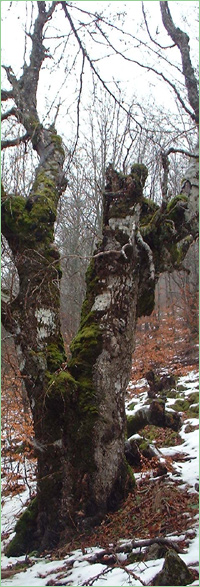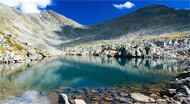Kotlenska planina (Unique identification code in the register: BG0000117)
Category: PZ under the Habitat Directive
Area: 69058.92 hectares Location:
1.
District: Burgas, Municipality: Sungurlare, Locality: Dabovitsa, Sadovo
2.
District: Shumen, Municipality: Varbitsa, Locality: Bozhurovo, Chernookovo, Kraygortsi, Varbitsa
3.
District: Sliven, Municipality: Kotel, Locality: Borintsi, Bratan, Dabova, Filaretovo, Gradets, Katunishte, Kipilovo, Kotel, Malko selo, Medven, Neykovo, Streltsi, Ticha, Yablanovo, Zheravna
4.
District: Sliven, Municipality: Sliven, Locality: Ichera, Rakovo, Stara reka
5.
District: Targovishte, Municipality: Omurtag, Locality: Zvezditsa
Falls in the territory of the following Regional Inspectorates of Environment and Water (RIEW):
1.
Burgas - ul."Perustica" 67,et.3,p.k.219
2.
SHumen - ul."Syedinenie" 71 et.4
3.
Stara Zagora - bul."Stara planina" № 2
Ordinance for announcement:
Ordinance No.РД-986 from 10.12.2021
2-2-117-986-2021
Record for protected zone (link):

Aims of the declaration:
1. Protection and maintenance of natural habitats types under item 2.1, habitats referred to item 2.2. species, their populations and distribution within the area to achieve and maintain their favorable conservation status in Continental biogeographical region;
2. Increase the contribution of the protected area to the area of natural habitats with code 6210 (* important orchid habitats);
3. Improving the structure and functions of natural habitats with codes 6110*, 6210 (*important orchid habitats), 6240 *, 91E0 *, 91M0;
4. Improvement of habitats of species Triturus karelinii, Emys orbicularis, Testudo hermanni and Testudo graeca;
5. If necessary, improvement of the condition or restoration of types of natural habitats refered in item 2.1, habitats of the species refered in item 2.2 and their populations.
Objects of protection (species or habitats):
1. Article 6, paragraph 1, section 1 from Biological Diversity Act: 6110* Rupicolous calcareous or basophilic grasslands of the Alysso-Sedion albi; 6210 Semi-natural dry grasslands and scrubland facies on calcareous substrates (Festuco-Brometalia) (*important orchid habitats); 6240* Sub-Pannonic steppic grasslands; 8210 Calcareous rocky slopes with chasmophytic vegetation; 8310 Caves not open to the public; 9130 Asperulo-Fagetum beech forests; 9150 Medio-European limestone beech forests of the Cephalanthero-Fagion; 9170 Galio-Carpinetum oak-hornbeam forests; 9180* Tilio-Acerion forests of slopes, screes and ravines; 91BA Moesian silver fir forests; 91E0* Alluvial forests with Alnus glutinosa and Fraxinus excelsior (Alno-Padion, Alnion incanae, Salicion albae); 91G0 * Pannonic woods with Quercus petraea and Carpinus betulus; 91M0 Pannonian-Balkanic turkey oak-sessile oak forests; 91W0 Moesian beech forests;
2. Article 6, paragraph 1, section 2 from Biological Diversity Act: 2.2.1. Mammals – Canis lupus, Ursus arctos, Vormela peregusna, Lutra lutra, Myotis myotis, Myotis bechsteinii, Myotis capaccinii, Myotis emarginatus, Myotis blythii, Rhinolophus ferrumequinum, Rhinolophus hipposideros, Rhinolophus Euryale, Rhinolophus mehelyi, Miniopterus schreibersii, Barbastella barbastellus;
2.2.2. Amphibians and reptiles – Bombina variegata, Triturus karelinii, Elaphe sauromates, Emys orbicularis, Testudo graeca, Testudo hermanni;
2.2.3. Fish – Barbus bergi, Barbus meridionalis, Cobitis taenia, Sabanejewia aurata, Cottus gobio, Rhodeus amarus;
2.2.4. Invertebrates – Austropotamobius torrentium, Cerambyx cerdo, Morimus funereus, Lucanus cervus, Rosalia alpina, Euplagia (Callimorpha) quadripunctaria, Paracaloptenus caloptenoides, Unio crassus;
2.2.5. Plants – Himantoglossum caprinum.
Current prohibitions and regimes:
1. It is prohibited conducting races with motor vehicles outside the existing roads in non-urban areas;
2. It is prohibited movement of motorcycles, ATVs, UTVs and buggies off existing roads in non-urban areas. The prohibition does not apply to routes for the movement of the listed motor vehicles determined on the basis of a normative act, as well as in case of disasters, emergencies and for carrying out fire-fighting, emergency, control and rescue activities;
3. It is prohibited to change the way of permanent use, plowing, afforestation and conversion into permanent plantations of meadows, pastures and grassland, when using agricultural lands as such;
4. It is prohibited to plow and afforest meadows, barren lands and other unforested forest territories within the boundaries of non-forest natural habitats under item 2.1 except in cases of proven need for protection against erosion and flood rain;
5. It is prohibited to remove landscape features (borders, vital single trees and groups of trees, traditional strips occupied by shrub and tree vegetation among lands under cultivation, protective forest belts, stone fences and hedges), when using agricultural land as such, except in cases to removal of invasive alien species of trees and shrubs;
6. It is prohibited the use of fertilizers, soil improvers, biologically active substances, nutrient substrates and plant protection products that do not meet the requirements of the Plant Protection Act;
7. It is prohibited the use of mineral fertilizers in meadows, pastures, grasslands, abandoned agricultural lands and forest areas, as well as plant protection and biocides of professional category of use in these areas except for calamity, epiphytosis,epizootic or epidemic;
8. It is prohibited to use of organic sludge from industrial and other waters and household waste for introduction into agricultural land without permission from the specialized bodies of the Ministry of Agriculture, Food and Forestry and when the concentration of heavy metals, metalloids and persistent organic pollutants in sludge exceeds background concentrations according to Annex № 1 of Ordinance № 3 of 2008 on the norms for permissible content of harmful substances in soils (SG, issue 71 of 2008);
9. It is prohibited to use of irrigation water that contains harmful substances and waste above the permissible norms;
10. It is prohibited burning of stubble, syllables, roadside strips and areas with dry and moisture-loving vegetation;
11. It is prohibited to make a fire, improvements, electrification, conduct of business and sports activities in the caves and caves' entrances, as well as to break, damage, to collect or to remove of rock and cave formations, and also to divide the cave's entrance or its individual galleries in a way that prevents passing of species subject to protection under item 2.2.1;
12. 'It is prohibited conducting speleological research during the breeding season of bats - from March 1 to June 30;
13. It is prohibited extraction of wood and biomass in forests in the old age phase, except in cases of damage of more than 50% of the area of the respective forest in the old age phase due to natural disasters and calamities; in old age forests, through which existing forest roads and other infrastructure objects pass, if proven necessary, felling of single dry, damaged, endangered or obstructing the safe movement of people and vehicles or the normal functioning of infrastructure objects trees is allowed;
14. It is prohibited grazing of domestic animals in forest areas, which are designated for forests in the old age phase;
15. It is prohibited carrying out felling in natural habitat with code 91E0 *, except for the needs of facilities (elements) of the technical infrastructure, for prevention of dangers endangering human life and health, in case of disasters and accidents, for maintenance / improvement of natural habitats and habitats of the species under item 2;
16. It is prohibited to build roads of second and higher class, without ensuring the construction of appropriate green infrastructure for the passage of bears and other animals.
Overlapping (partial or full):
1.
Natural Monument: Peshterata Lednitsata
2.
Protected Site: Demir Kapiya (Zhelezni Vrata)
3.
Protected Site: Kersenlik
4.
Protected Site: Medvenski Karst

|
|

|





